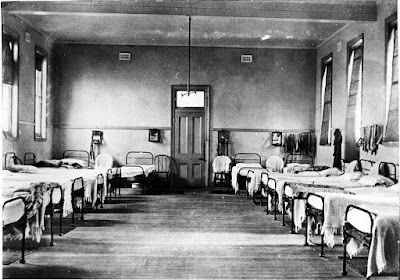The last decades of the nineteenth and first decades of the twentieth century saw the establishment of the educational base that would determine Armidale’s future.
By 1923, Armidale had established an articulated school structure that was remarkable for its time and would be familiar to Armidale residents for the next fifty years.
In public education, there were three primary schools:
- Armidale Superior Public School (1865) later Armidale Demonstration
School, later still Armidale City Public School
- West End (1890), later West Armidale Public School, later still
Drummond Memorial School
- North Armidale (1900) late Ben Venue (1914).
These primary schools,
along with those in the surrounding districts, fed into the newly established
Armidale High School (from 1920, buildings completed 1923). With time, a number
of Church hostels would be established to provide boarding accommodation for
those attending Armidale High.
The Roman Catholic school system covered what is now St Mary’s Primary School (from 1848), St Ursula’s College (1882) and De La Salle College (1906). Both St Ursula’s and De La Salle provided boarding facilities.
The two Anglican boarding schools were the Armidale School (1894) and the New England Girls’ School (1895). In addition, the New England Ladies College had been established in 1887. Later this would become the Hilton School, later still the Presbyterian Ladies College.
Armidale also had its first tertiary institution, St John’s Theological College, established in 1898 to provide training to prospective Anglican clergy. This college would move to Morpeth in 1926.
These developments brought considerable economic and cultural benefits to the still small city. Boarders and the staff required to teach them brought economic benefits, as did construction associated with new school buildings.
The growth in the city’s educated class would feed into cultural and community activities and later into moves to bring new educational facilities to the city.
The developments could not have happened without the combination of the city’s role as a religious and administrative centre with the railway that made it easier for people to get to Armidale. But what the railway gave, it also took away.
I will look at this in my next column on the story of the rise, fall and slow recovery of Armidale.
Note to readers: This post was prepared as a column for the on-line edition of the Armidale Express. I am repeating the columns here with a lag because they are not all on line outside subscription. You can see all the Belshaw World and History Revisited/History Matters columns by clicking here for 2009, here for 2010, here for 2011, here for 2012, here for 2013, here for 2014, here for 2015, here for 2016, here 2017, here 2018, here 2019, here 2020, here 2021










No comments:
Post a Comment